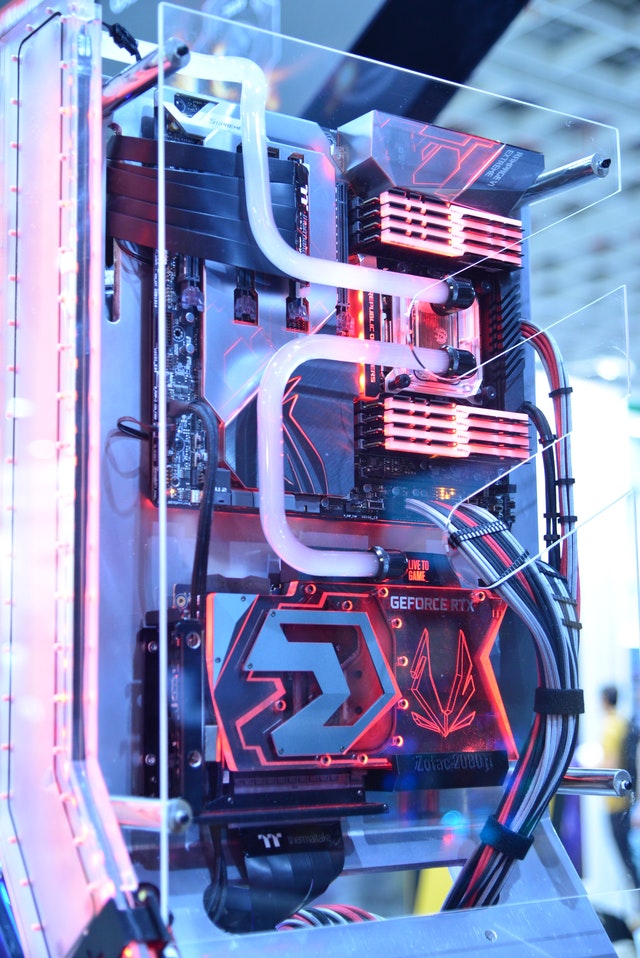
Building a custom PC can be rewarding. You’ll have complete control over the components, and you’ll know exactly what goes into your computer. Building your PC also allows for customization to fit any need or budget. However, you must have all the right tools before you start building. If you’re planning on building a custom PC soon, then here are 5 cables every builder needs:
1) Power Supply
The power supply is the source of electricity for your computer. You need to make sure it has enough wattage and connectors before you buy. Then how much wattage each major component requires, which should be a good reference point when purchasing a PSU. Additionally, almost all motherboards require an ATX connection. Make sure that whatever PSU you get has this connector type, or it won’t work with your motherboard. Remember: if in doubt, always ask someone at the local electronics shop – they’ll know what kind of cables will fit together.
2) SATA Cable
The SATA cable is used to connect storage drives, such as hard disks or SSDs, to your motherboard. A regular IDE connection won’t cut it anymore – most motherboards only have a few SATA connections available. If you’re building an entry-level PC for video editing or gaming purposes, then make sure you get at least one SATA drive. You’ll need the extra space on the drive if you plan on storing lots of media files. Some high-end computer cases can mount two more storage devices outside of the case (on top). Make sure that whatever build configuration you choose has enough room for these external connected drives.
3) Molex Cable
Before SATA and other drive connections became commonplace, computers used Molex connectors to connect storage devices. Even though these cables are now considered outdated, they can still be useful. For example – if you want to use a fast SSD as your boot disk (instead of an HDD), then this is the way to go. It’s also great for installing extra case fans without using USB ports or wasting precious motherboard space. If your computer runs out of Molex connectors on the power supply unit itself, there are extension cables that allow you to stack them together:
When connecting the SATA cable, make sure you connect it to a specific port on your motherboard, don’t plug in any random connector. Most motherboards require some digital coaxial cable or optical audio for sound. You can either use these pre-installed connectors or buy additional ones based on how many speakers are connected to your PC. It’s also possible that some newer computers may have video outputs (for HDMI output).
Additionally, most computer cases only come with USB ports located at the front side panel. This means they’ll be facing outside instead of toward the interior where all the components are.
4) USB Cable
USB cables are one of the most commonly used types of cable in modern computing. They’re able to transfer both data and power so that they can connect your keyboard, mouse, USB flash drive, or even smartphone. Almost every computer comes with at least two built-in USB ports located near the front side panel. This is perfect for plugging in a keyboard or controller. But, you may want more connectors if you have more than that (or you want them inside). If you decide on moving all your components into an expensive custom PC case, then you’ll need hundreds of these cables. The good thing is that there’s no shortage when it comes to buying them online either. Since each device uses different amounts of voltage, make sure that whatever PSU you get has enough power for all of them.
5) Audio Cable
Just like USB cables, many different types of audio connectors can be used for PCs. The most commonly used ones are the green-and-white jacks on your motherboard itself. These allow you to connect speakers directly into them. If instead, you want more control over the sound output, then it might be a good idea to get more digital optical or coaxial cables (for surround sound).
Closing Thoughts
You can plug many different cables can into a computer. By following these instructions, you’ll avoid making common mistakes and ensure that your build is compatible.


